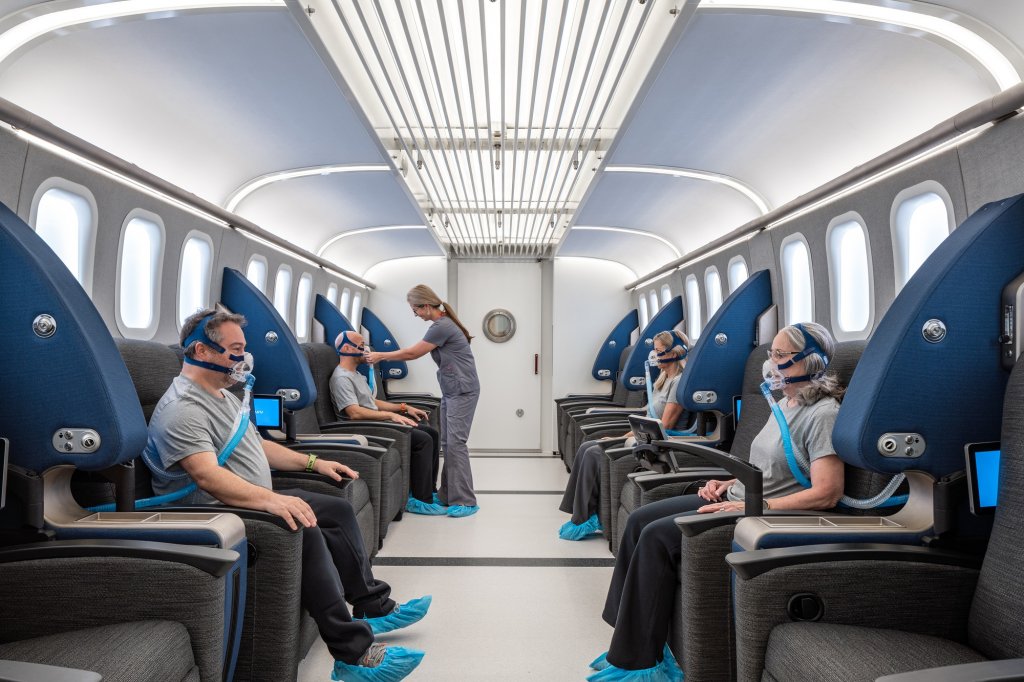
Can Hyperbaric Oxygen Therapy Treat Lyme Disease?


Lyme Disease ranks as the most common tick-borne illness in many parts of the world, including the United States, Europe, and Asia. It’s also among the hardest to treat, with many patients getting little relief from common treatments that involve antibiotics. However, there may be new hope for those suffering from chronic symptoms, through hyperbaric oxygen treatment for Lyme Disease
As many as 476,000 people may get Lyme Disease each year in the U.S. alone, according to the Centers for Disease Control and Prevention. Untreated Lyme Disease can lead to many symptoms, including fever, rash, facial paralysis, and arthritis.
Recent research has found that hyperbaric oxygen therapy (HBOT) can treat Lyme Disease and may prove especially effective for those who have been resistant to other interventions. Researchers are seeing success with the treatment of Lyme patients who have received antibiotics for at least 10 years without significant improvement. The patients report feeling better than they have in years, and in some cases have stopped taking antibiotics.

The Biology and Impact of Lyme Disease
Lyme Disease is caused by the spirochete B. burgdorferi, a microaerophilic organism carried by the deer tick (or black-legged tick) and transferred to humans through the tick’s bite. Symptoms typically start with a bullseye rash and erythema migrans, a slightly raised lesion at the point of the tick bite. They then can advance to joint and muscle pain, sore throat, fever, swollen glands and mental fogginess.
If not diagnosed within the first month or two, the disease may become a chronic infection. Research shows it becomes sequestered in cells, which protects it from effective treatment.
Recent autopsy reports have shown how ineffective antibiotics can be in some cases. They found that the spirochete continues to live in the human body in multiple areas, including the inferior wall of the heart, tendons, muscle tissue and in the brain.
Previous autopsy reports on beagles and rhesus monkeys produced similar findings. Resistance to antibiotics comes from plasmids, including the spirochete that causes Lyme disease. Also, a biofilm protects both the spirochete and spirochetal DNA.
HBOT’s Impact on Lyme Disease
Hyperbaric oxygen therapy for Lyme disease involves the inhalation of 100% pure oxygen while sitting in a hyperbaric suite, which is pressurized to above atmospheric levels. During these sessions, oxygen levels in the body’s tissues rise to 10-15 times that of normal conditions. In 1998, W.P Fife and D.M Freeman, researchers at Texas A&M University, found that HBOT treatments improved quality of life in Lyme disease patients. They postulated that the increased oxygen levels killed off the anaerobic bacterium that causes the disease. Chinese researchers also reported that they eliminated Lyme disease symptoms in a patient from Taiwan using HBOT treatments after antibiotic treatments had failed.
Part of the Aviv Medical Program, the HBOT protocol offered at Aviv Clinics increases intervascular oxygen concentration to 1,500 times more than normal diffusion into the regular tissues. The results indicate the spirochete that causes Lyme disease cannot live in an oxygen-rich environment.
The unique, evidence-based HBOT protocol used at Aviv Clinics treats many of the symptoms associated with Lyme Disease. As the nation’s largest non-military hyperbaric treatment center, Aviv Clinics offers the most advanced HBOT protocol available. Clients report less fatigue, better energy, more sleep and less joint pain. HBOT also supports maintaining healthy cognitive function as we age and our bodies become less efficient at processing oxygen. the Aviv HBOT protocol enhances both brain and body performance by boosting access to oxygen.
In addition to the potential for treating Lyme disease, recent research has found that a unique HBOT protocol can help reverse biomarkers of aging and may be a successful treatment for anoxic brain injury patients.
To learn more about treatment options, contact Aviv Clinics for a complimentary physician consultation.
Last update: June 25, 2025
Aviv Medical Program provides you with a unique opportunity to invest in your health while you age


